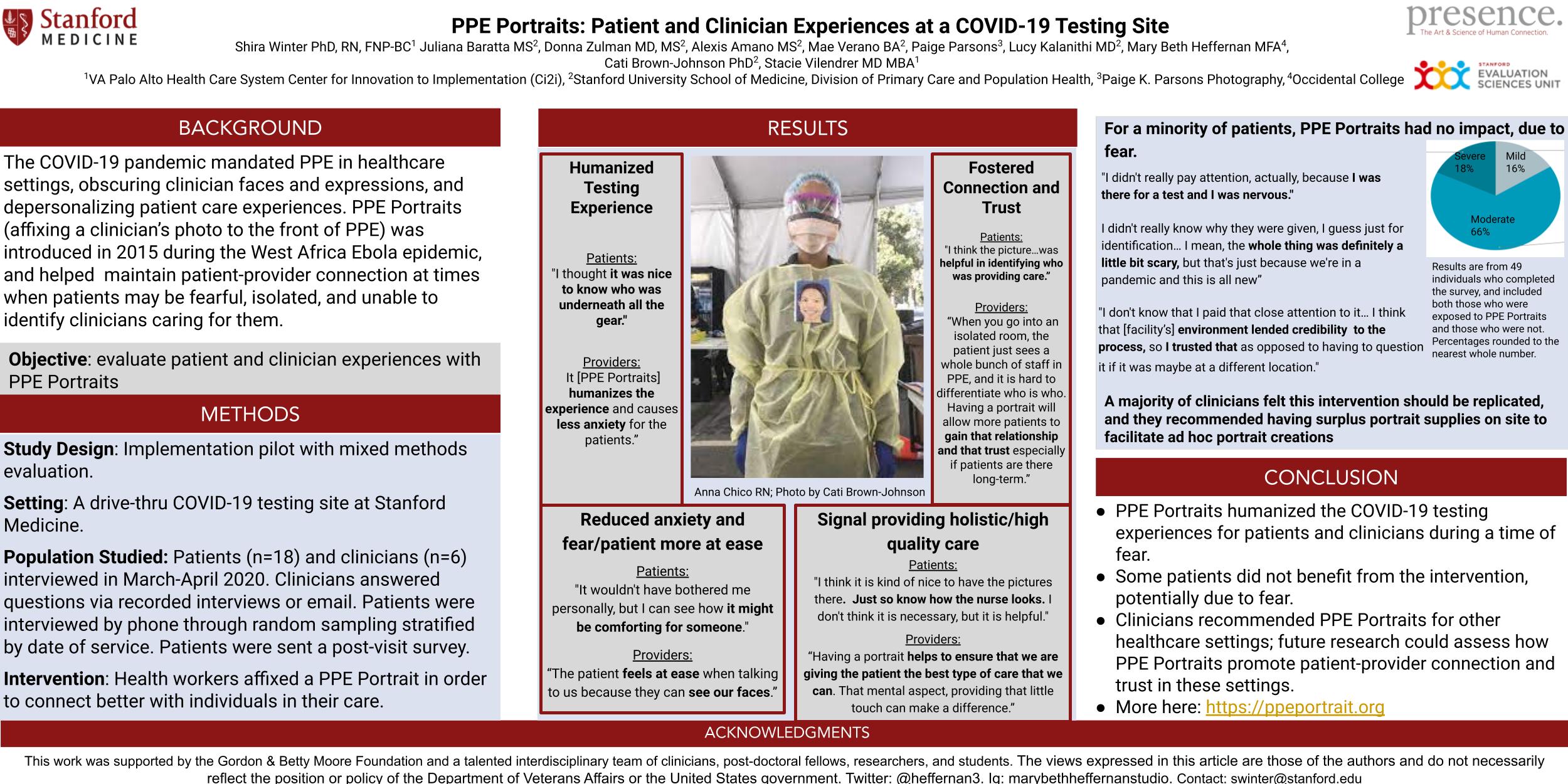PCR054: PPE Portraits: Patient and Clinician Experiences at a COVID-19 Testing Site
Shira Winter, PhD, RN, FNP-BC; Juliana Baratta, MS; Alexis Amano, MS; Mae-Richelle Verano; Mary Beth Heffernan; Paige Parsons; Stacie Vilendrer, MD, MBA; Lucy Kalanithi; Donna Zulman, MD, MS; Cati Brown-Johnson, PhD

Dennis Baumgardner, MD
11/19/2021Interesting assessment - thank you!